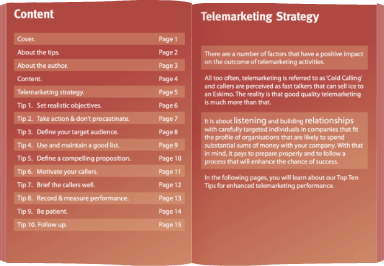Lead generation isn’t easy. If it was, we’d all have enough leads to grow our business. It would be like shooting fish in a barrel. Marketing and sales would almost be redundant.
But, sadly, it’s not like that. Every business has competitors. Some are stronger than others. Products and services come in all shapes and sizes. What’s more, customer needs vary in types, timing and level of requirement. It’s a corporate minefield out there.
Maximise Your Chance of Success
In this blog, we provide 5 questions to ask when doing lead generation.
With so much competition, and so many options for business development, companies looking for growth need to maximise their chances. They also need to keep costs down and deliver ROI. To be able to give themselves a fighting chance of success, businesses need to take into account a number of factors when working out the best approach.
Which Target Audiences are Most Receptive?
This sounds obvious. Yet, many organisations have a variety of potential targets. They also have a set of different products and services that could be applied to those targets. The problem is that you can be all things to all people and spreading your efforts too thinly may result in failure. Marketing investment and sales support need focus to be effective. So, drill down into the various audiences for your service and ask yourself a few key questions:
- Which audiences most need our solutions?
- Which decision-makers suffer the most pain by not having what we offer?
- Where is the best likely return?
- Who is likely to buy most?
- Which audiences will deliver the quickest results?
- How easy is it to identify the audience and build a target list for marketing?
What Differentiates Your Offer from Competitors?
Of course, differentiation isn’t everything. There are very few companies that can offer true differentiation that is so strong that it acts as an immediate driver of purchase intent.
However, if your offer is so niche that no-one needs it, your business development efforts will amount to nothing. So, it’s a blend of identifying what marks your business out from the rest with what is compelling enough for target customers to want to buy, and, most importantly, to buy now.
This relates very closely to the point above. The two go in tandem. If you can identify a sector and a decision-maker that is in urgent need of something that only you offer, it’s happy days. But, this requires research. It needs your sales and marketing teams to have their finger on the pulse. It means adapting to market opportunities that arise. Change is constant and that can present fresh opportunities. Good examples of this are changes to compliance in both financial services ‘Know Your Customer (KYC) and for Data Protection with the relatively recent GDPR rules. The same can be said for PPE providers during the Covid pandemic. Service providers in these areas will have benefited from the upswing in interest.
Which Channels are Most Effective?
Once again, this is a hard one. It may be that you’ve successfully utilised one method or another for years. That’s great if it’s true. If the ROI is positive, keep on going. However, there are so many routes to market from which to choose. Marketing budgets will ultimately dictate. Clearly, the larger your organisation, and the higher your revenue, the more funds you will have at your disposal.
However, budgets are always scrutinised and payback is always at the front of the minds of hard-pressed executives. Traditional marketing wisdom suggests that you should focus on multiple touch points (channels) with multiple touches. In essence, that means reaching out to prospects using several methods and doing it over a period of time on a regular basis.
Deciding how to allocate your money and time is the challenge. Spread yourself too thinly and you’ll be more likely to fail and miss opportunities. So, it’s always important to consider which methods and which blend will work best for your business. The key is to try to identify which channels will, most likely, cut through and reach the intended target. It’s not a precise science though and some element of testing may be needed. Therefore, do your analysis. Ask customers the best way to reach them and apply that to prospecting. Check out different methods and providers for costs versus likely benefits.
How To Measure ROI
Business development is all about a positive return on investment. Yet, measuring the payback isn’t always straightforward. How long is the gestation period before purchase? What is the typical value of sale? What about inclusion of future purchases after the initial sale i.e. lifetime value? How much additional work needs to go in before conversion. And, what’s your lead to conversion ratio? There are many more factors to consider.
Clearly, it is going to be more of a challenge to identify and win a large piece of business that is worth tens of thousands than it is to secure smaller sales. Therefore, each lead would arguably be more valuable. That means that your cost per lead can be higher and potentially take longer to come to fruition. So, when looking at potential payback, it pays to consider a number of elements including:
- The length of the sales cycle
- The value of sale
- The state of the ongoing pipeline of leads
- The ability to deliver those types of opportunities without the investment in lead generation i.e the opportunity cost.
How are Awareness and Lead Generation Linked?
A recent article in Marketing Week questioned whether organisations in B2B are being too short-termist in cutting investment too soon. The idea being that since sales cycles are long, your business needs to be visible at the time that decisions are made. That’s easier said than done since it’s tough to discern when a specific potential prospect will be in the market. However, one thing is for sure, if you aren’t present, you won’t secure the business.
That suggests that a long-term approach is essential. That doesn’t mean throwing caution to the wind and a good deal of money with it. You must be rigorous in approach, analysis and measurement. Few businesses have unlimited funds. However, it does mean that a sensible approach to outreach is needed to avoid knee-jerk reactions. Industry approaches will differ. Some sectors will be more receptive than others. Some methods of marketing will be more effective than others. And, decision-makers vary. The list goes on.
Lead generation is possibly the most difficult aspect of marketing regardless of the size of your operation. So, it pays to think long and hard about your approach. That could be perhaps account-based marketing using brand awareness activities such as content development and telemarketing, through to the use of email nurturing or pay per click marketing. The options are almost endless.
Whatever you decide, your approach to business development should be well thought out and not something that is simply delegated to your sales team as just another task.






